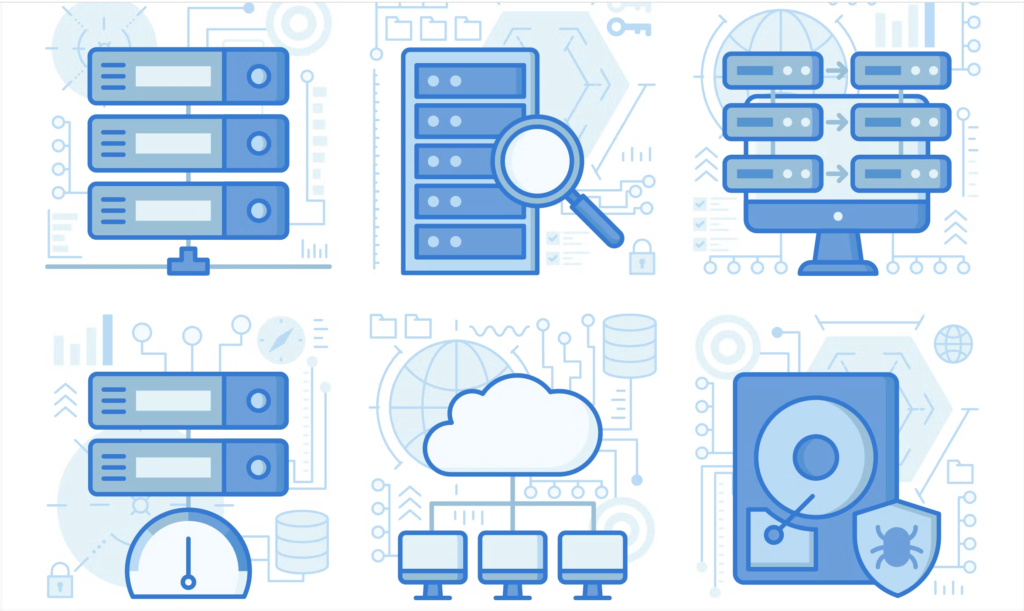Data Loss Prevention Best Practices: Comparing Solutions for Remote Work

According to the 2024 IBM Cost of a Data Breach Report, the average breach cost was $4.88 million in 2024, with remote work contributing to longer breach lifecycles and higher costs. As employees increasingly use personal devices outside of IT’s control, businesses need to develop and strengthen data loss prevention best practices.
This guide explains how to ensure data loss prevention (DLP) for bring-your-own-device environments, the limitations of legacy DLP solutions, and which technology enhances both data security and user experience.
How Remote Work Elevates Data Risk
Legacy DLP solutions like VDI and DaaS often fall short in remote and BYOD scenarios. Perimeter security that relies on firewalls and intrusion detection systems is effective in on-premise work environments with local servers, but it’s not the best solution for remote work and cloud-based business systems.
When employees can use their personal devices to access systems and data from anywhere, the attack surface expands for employers. Understanding the risks associated with BYOD is the foundation of data loss prevention best practices.
DLP for Remote Devices: Comparing Approaches
Securing data on remote and BYOD devices requires a new mindset. Let’s compare the most common approaches:
Virtual Desktop Infrastructure (VDI) & Desktop-as-a-Service (DaaS)
VDI and DaaS centralize data and applications in a cloud environment or corporate data center, keeping sensitive information off user endpoints. However, VDI and DaaS often introduce frustrating latency for users and require significant infrastructure investments and excessive IT admin time.
Enterprise Browsers
Enterprise browsers give end users controlled access to business systems, without the latency of VDI or DaaS. However, this technology is usually vendor-dependent and may be incompatible with some business applications. Additionally, these browsers confine users to web-based apps only, often disrupting day-to-day workflows such as downloading documents or using the Zoom app..
Secure Enclave
A Secure Enclave creates a company-controlled, isolated workspace on any PC or Mac. All applications run locally on the user’s device, eliminating the latency that comes with other remote work technology. Everything that happens within the enclave is shielded from vulnerabilities on the personal portion of the device, and employers can’t see any activity outside of the enclave.
IT teams may be familiar with the Secure Enclave as a method for securing mobile devices. But only recently has the same technology been optimized for laptops. A leader in Secure Enclave tech (aka “MDM for laptops”) is Venn.
How Venn’s Secure Enclave Prevents Data Loss
Venn’s Secure Enclave is purpose-built for remote and BYOD work challenges. Here’s how it addresses key DLP requirements:
File Storage Security
Files created or accessed inside the Secure Enclave are automatically encrypted and securely stored. The Secure Enclave blocks unauthorized access, even if the device is lost or compromised, and it protects business data from threats caused by user negligence, like weak passwords.
Policy Management and Compliance
Administrators can define granular DLP policies for data movement, application access, and user permissions within the enclave. You can set permissions based on:
- User or group
- Compliance requirements
- Employee type (contractor vs. full-time)
Onboarding and Offboarding
IT teams can deploy the Secure Enclave via email for users to install. The ease of setup lets companies onboard new hires quickly, and when an employee leaves or a laptop is lost, admins can immediately conduct a remote wipe and remove access to the Secure Enclave from the device.
User Privacy
Work and personal data are strictly separated, maintaining user privacy while ensuring corporate data security. Venn’s Blue Border™ visually signals when users are working within the protected environment by wrapping work applications with a blue border. This approach secures corporate data, supports compliance, and creates a clear boundary between work and personal use.
Data Loss Prevention Best Practices Checklist
Here’s a handy checklist to help you set up and manage DLP:
- Classify and Inventory Sensitive Data: Identify sensitive data, map its locations, and track access.
- Enforce Encryption: Encrypt all sensitive data at rest and in transit, including files within secure workspaces like the Secure Enclave.
- Educate and Train Users: Provide employee training on security policies, safe data handling, and the importance of using protected environments. Use real-world scenarios to illustrate risks.
- Automate DLP Policies: Deploy automated tools to enforce laptop policies, restrict risky behaviors, and monitor for suspicious activity. Automation reduces human error and ensures consistency.
- Implement Strong Authentication: Require multi-factor authentication (MFA) for all remote access.
- Monitor and Respond to Incidents: Continuously monitor for policy violations and potential data loss. Establish a clear incident response plan and conduct regular breach drills.
- Separate Work and Personal Data: Use Venn’s Secure Enclave to isolate corporate data, ensuring privacy and compliance.
- Regularly Review and Update Policies: Adapt DLP policies as threats evolve and business needs change, with input from IT, compliance, and HR.
- Support Regulatory Compliance: Align DLP controls with relevant regulations (GDPR, HIPAA, FINRA, etc.). Document policies and maintain audit trails.
- Change Management: Communicate changes, involve end users in the process, and provide support during transitions.
Venn: The Best Way to Protect Data in BYOD Environments
Venn’s Secure Enclave empowers organizations to protect data on unmanaged devices without sacrificing user experience or privacy. See how Venn defends businesses against evolving threats and offers the best UX for end users by requesting your demo now!
Frequently Asked Questions (FAQ)
What are the key challenges of enabling BYOD?
The shift to BYOD work makes it difficult for IT teams to monitor and control data flows. Unmanaged devices, cloud applications, and personal networks introduce security vulnerabilities that require the proper security solution.
Key challenges include:
- Lack of visibility and control over data on personal devices
- Increased risk of accidental or intentional data leakage
- Difficulty enforcing consistent security policies across diverse endpoints
- Compliance challenges with regulations like GDPR, HIPAA, and FINRA
How do I secure data on BYOD or unmanaged devices?
Use Venn’s Secure Enclave to create a company-controlled, isolated workspace on any device. This ensures corporate data encryption, controlled access, compliance, and end-user privacy.
How does Venn’s Secure Enclave differ from VDI or DaaS?
Unlike VDI/DaaS, Venn’s Secure Enclave hosts apps and files natively on the user’s device, providing a seamless experience without latency. Blue Border™ visually indicates the secure workspace, and personal data remains private.
Can I automate DLP policy enforcement?
Yes. Venn’s platform allows for automated policy enforcement, real-time monitoring, and rapid incident response.
More Blogs


